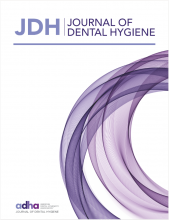Abstract
Purpose. The aim of this work is to study and compare the retention rate, caries-preventing and antibacterial effects of resin-modified glass ionomer and flowable composite in comparison to conventional fissure sealant.
Methods. Forty-five children aged 7-10 years with newly erupted lower first permanent molars were randomly divided into three equal treatment groups. Group I: sealed by a conventional resin sealant; Group II: sealed by resin modified glass ionomer (RMGI); and Group III: sealed by flowable composite. Retention and caries status of the sealed teeth were recorded after 1 month, 6 months, year and 2 years. In addition, Streptococcus mutans counts were assessed at baseline, 1 day, 1 month, 6 months, 1 year and 2 years after sealant application. Data were analyzed by Fisher exact, chi-square and ANOVA tests.
Results. Group III and Group I showed significantly higher retention rates than Group II fissure sealant (p<0.05). There were no differences of the caries-preventive effects between the tested sealant materials throughout the duration of the study. Streptococcus mutans counts were significantly lower in group II compared to group I or group III up to 6 months of the study (p<0.05). After 1 year of the study the differences of Streptococcus mutans counts were not significant (p>0.05).
Conclusion. This study indicated a lower retention of RMGI compared to flowable composite and resin sealant without significant difference in caries prevention or long-term bacterial inhibition.
- Copyright © 2008 The American Dental Hygienists’ Association








